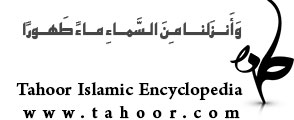
The treatise of pure word
This book is one of the Mirzä Ahmad Äshtiyani’s works and writings. Ahmad Ibn Mohammad Hassan Äshtiyani has re-discussed about principle of monotheism by a group of his friends’ pointing, therefore wrote the list of (his) statements with a preface and some chapters and called it pure word.
The author’s brief biography:
Mirza Ahmad Ashtiyäni, the Imamism Shi’te “jurisconsult”(jurist) and philosopher, the fourth and ####youngest child of Mirza Hasan Mojtahed Äshtiyäni, well-known jurisconsult of Naser Al-Din Shäh and Mozaffar Al-Din Shäh Qäjär time, was born in Tehran in 1883A.D. (1300A.H.). After learning the Arabic preliminaries and Persian literature, at the presence of his father studied the preliminary level of “jurisprudence”(fegh), “methodology”(osul) and after his father death in (1901A.D./1319A.H.), continued his studies in the presence of other scholars such as Seyyed Mohammad Yazdi, Mirzä Häshem Rashti, Hakim Kermänshähi and Hakim Eshkevari and then began instructing the “transmitted and rational” (maghool and manghool) in Sepahsälär school. He left for Holy Najaf in 1921 A.D.(1340A.H.) and in addition to benefited from the presence of masters such as Allame Näini and Äghä Ziä’e Aräghi, he also himself instructed the philosophy. He returned to Iran in 1931A.D.(1350A.H.) and spent the rest of his life in Tehran and instructing the jurisprudence, methodology, “rational sciences”(oloom aghli), writing book and guiding the people. Up to end of life he was in charge of Marvi’s theological school, the biggest theological school of Tehran. In addition to “rational and transmitted sciences” (oloom aghli and naghli), Mirza Ahmad, knew about old medicine, old sciences and mathematics. He had beautiful hand writing and composed poetry with pseudonym of “Väle”. He was good-tempered Gnostic, humble, pure-hearted, faithful to religion and super fine example of piety. Mirza Ahamad got permission of Ejtehäd from the authority of that time such as: Mirza Hassan Näini, Hä’eri Yazdi, Äghä Ziyä Al-Din Aräghi, Seyyed Abul Hassan Isfahäni and Häj Äghä Hassan Borujerdi. The result of his marriage was two boys and four daughters. Ayatollah Ashtiyäni after about 80 years teaching and learning, training the people, serving to Islam and Muslims, died at the age of ninety five in 1975/Jun/34 (1354/tir/3 S.H.or 1359/6/14A.H.). He buried in his family tomb in courtyard of Shah Abdol Azime shrine.
The book structure:
This book including one preface and chapters as follows:
-preface: on knowledge of God that has been divided into three parts
-chapter one: including 6 proofs and Arguments in “Theology”(theism),
-chapter two: the Essence of the One, never has any compound
-chapter three: the reality of sacred Bright, which is the Divine Essence, is ancient and eternal,
-chapter four: that reality is unique and oneness, which want multiplicity of “necessitator”(mojeb), otherwise each reality in its essence is the one.
-chapter five: the purpose of “Absolute Unity”(vahdäniyat) of that sacred Essence
-chapter six: the sacred reality of the light and life, does not have limitation
-chapter seven: no any intellect understand and surround, the “simple”(baite) reality of the God
-chapter eight: the sacred reality of the life and the light, that is like the God’s Essence, is like the science, power and will of “Essential”(zätiyeh).
This treatise has been written in 1933A.D.(1352A.H.)and had been lithography printed in 1934A.D. (1353A.H.). It has been second and third-printed in 1957A.D.(1336S.H.) and 1983A.D.(1403A.H.). The fourth edition is in twenty-treatise book.
Sources :
The treatise of pure word by Ahmad Äshtiyani